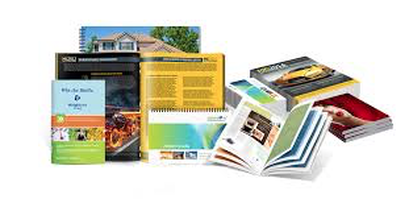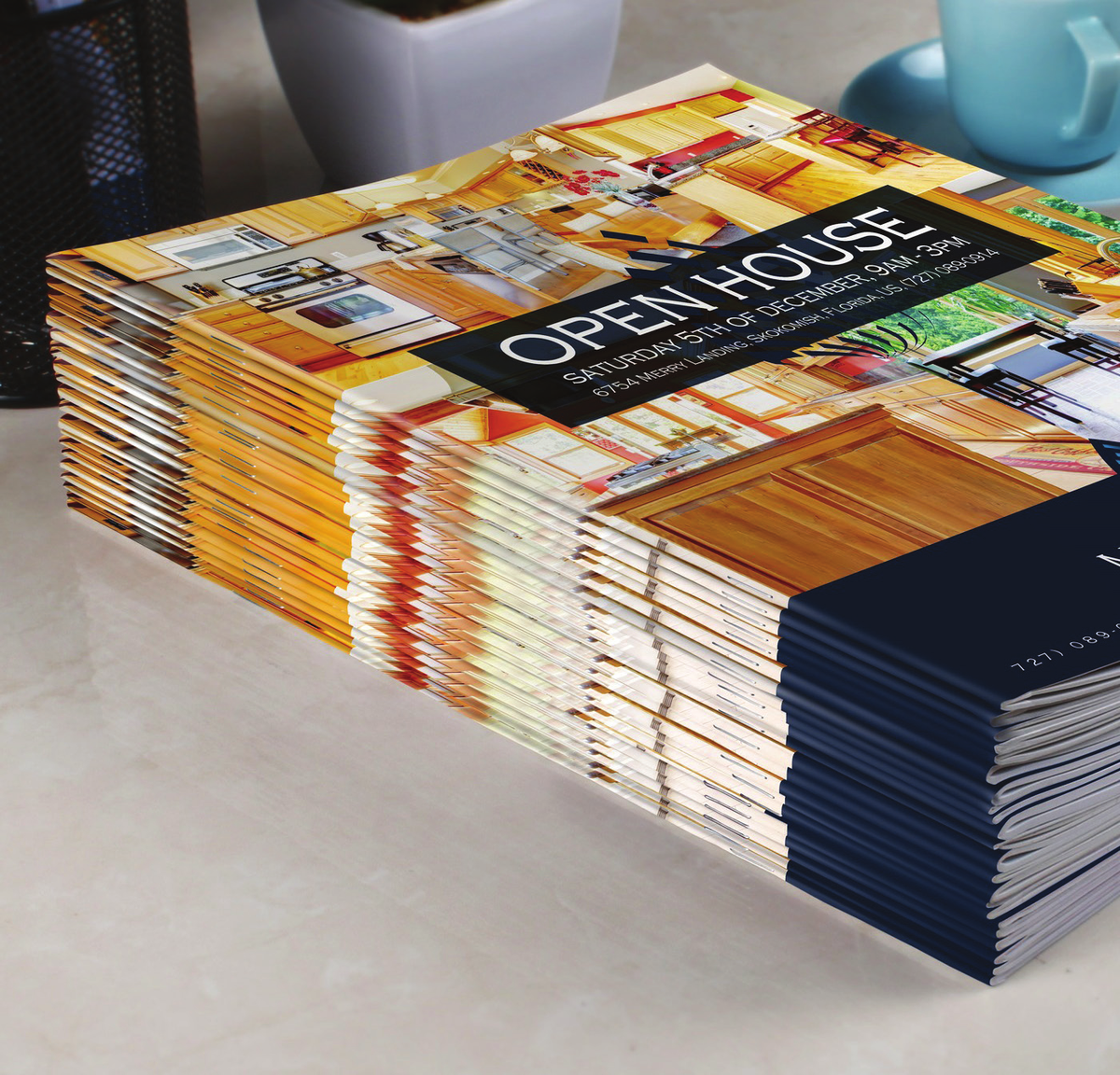A Beginner’s Checklist for Successful Booklet Printing Projects
A Beginner’s Checklist for Successful Booklet Printing Projects
Blog Article
The Crucial Overview to Comprehending Booklet Printing Options and Techniques
The procedure of pamphlet printing includes multiple considerations that can substantially influence the end product. From picking the proper style and dimension to recognizing the nuances of binding methods, each selection plays a necessary function. Additionally, variables such as paper stock and printing techniques additional influence the performance of the brochure. As one browses these choices, it becomes vital to understand just how they adjoin and what that implies for the total outcome.
Comprehending Booklet Styles and Dimensions
When thinking about brochure printing, comprehending the different layouts and sizes readily available is vital for achieving the desired presentation. Brochures can be created in countless formats, including saddle-stitched, spiral-bound, and perfect-bound, each offering distinctive benefits. Typical dimensions range from typical letter (8.5 x 11 inches) to smaller sized alternatives like A5 (5.8 x 8.3 inches), enabling adaptability based on web content and target audience.Selecting the suitable size can affect both the layout and visitor engagement. Larger dimensions could match aesthetically driven content, while smaller sized styles might be extra straightforward and portable. Furthermore, the variety of web pages influences the selection of binding technique, as thicker pamphlets might require sturdier bindings. Eventually, understanding these elements enables an extra tailored approach, ensuring that the end product straightens with the desired message and visual, enhancing the general efficiency of the communication.
Picking the Right Paper Supply

Binding Methods: Factors To Consider and options
When it involves binding methods for brochures, a number of alternatives are available, each with distinct advantages. Saddle stitch binding uses a cost-effective service for thinner brochures, while best binding strategies provide a more polished try to find thicker publications. Wire-O binding stands out for its toughness and convenience of usage, making it ideal for documents that require versatility.
Saddle Stitch Binding
Saddle stitch binding provides a practical and affordable option for constructing booklets, making it a preferred option among publishers and organizations. This binding technique includes folding sheets of paper in half and stapling them along the fold line, creating a neat and organized appearance. Generally ideal for booklets with a reduced web page count, saddle sewing is optimal for publications, sales brochures, and instructional materials. The simplicity of this strategy permits quick production and is commonly preferred for marketing items or short runs. Nevertheless, it is necessary to note that saddle stitch binding might not be appropriate for thicker booklets, as the spinal column might not hold up under raised weight. Overall, it continues to be a reputable option for several printing tasks.
Perfect Binding Methods
Perfect binding is a widely used technique that offers a professional and sleek finish to pamphlets and publications. This technique involves gluing the pages with each other at the spine making use of a strong adhesive, enabling for a clean edge and the capacity to hold a larger number of web pages compared to saddle stitching. Perfect binding is specifically suitable for thicker brochures, such as catalogs and annual reports, where a durable, flat spine is desired. In addition, it supplies the alternative for a published cover that can be made to boost aesthetic appeal. Considerations such as page matter, paper weight, and the planned usage of the pamphlet should be taken into account, as they can affect toughness and overall high quality.
Wire-O Binding Choices
Wire-O binding, recognized for its longevity and flexibility, provides an outstanding choice for brochures that need simple web page transforming and an expert look. This binding technique utilizes a series of metal loops that hold pages safely, permitting them to exist level when open. It is specifically ideal for discussions, directories, and handbooks because of its robust nature. Wire-O binding is available in numerous shades and diameters, accommodating various web page counts and thicknesses. In addition, it allows the incorporation of covers and tabs, boosting the pamphlet's overall aesthetic. Factors to consider for Wire-O binding consist of the selection of wire color, the dimension of the loopholes, and the extent of modification desired, all of which can profoundly influence the last product's look and capability.
Digital vs. Offset Printing: Which Is Best for You?
When choosing a printing technique for booklets, comprehending the differences between electronic and offset printing is essential. Digital printing uses modern-day technology to generate top quality prints swiftly and economically, making it suitable for brief runs or projects calling for fast turn-around times. It enables for modification, supplying the ability to publish on-demand with marginal waste.In comparison, offset printing is a conventional approach that stands out in creating large quantities with consistent quality. It entails transferring ink from a plate to a rubber blanket, after that to the paper, which results in accurate information and dynamic colors. However, counter printing generally calls for longer configuration times and is a lot more affordable for bigger volumes.Ultimately, the selection between digital and offset printing depends upon task needs, budget plan, and wanted quantity. For small, time-sensitive projects, digital may be the very best choice, while countered might be more effective for bigger, premium manufacturings.

Creating Your Brochure: Tips and Finest Practices
When developing a booklet, mindful focus to design, font selection, and shade usage can considerably enhance its effectiveness. A well-structured format overviews the reader's eye, while appropriate typefaces assure readability and communicate the desired tone. Additionally, reliable use of color can right here stimulate emotions and emphasize crucial info, making the total style much more impactful.
Choosing the Right Design
How can one effectively select the best format for a pamphlet? It is web vital to examine the brochure's function and target audience. A tidy, organized design enhances readability and involvement. Utilizing a grid system can assist in aligning components regularly, developing a professional look. Additionally, integrating aesthetic pecking order with differing sizes and positionings of photos and text can direct the visitor's eye and stress vital info. It is additionally important to leave enough white space, which stops overcrowding and permits for much better emphasis. Lastly, checking various formats with mock-ups can offer insight right into how the style performs in real-world situations, making sure that the last product meets both useful and aesthetic demands.
Choosing Proper Typefaces
A well-chosen font style can significantly enhance the general style of a brochure, matching the design and strengthening the material's message. The choice of font styles must take into consideration readability, specifically for body message, as it assures the info is accessible to all readers. Sans-serif fonts are typically liked for digital formats, while serif fonts can offer a typical feeling in printed materials. It's advisable to restrict font selections to 2 or three to maintain aesthetic comprehensibility. Furthermore, font dimension plays a vital function; headings ought to be distinct yet not frustrating, while body text should be comfy for analysis. When selecting typefaces, placement with the brochure's theme and target market is vital for effective interaction and aesthetic appeal.
Reliable Use of Shade
Shade works as an effective tool in booklet design, shaping perceptions and guiding visitor emotions. It can evoke sensations of calmness, exhilaration, or trust, depending upon the tones selected. Designers must consider color theory concepts, making certain that the chosen combination lines up with the pamphlet's message and target audience. For instance, utilizing cozy shades like red and orange can develop urgency, while cooler tones like blue and eco-friendly foster tranquility.Additionally, comparison plays a vital role; corresponding colors can improve readability and aesthetic allure. Consistency in shade use throughout web pages better reinforces brand name identification and communication. Eventually, efficient color application not only captures attention but also reinforces the pamphlet's objective, making it an important aspect of successful layout.
Ending Up Touches: Coatings and Unique Impacts
While numerous consider the content and format important source of a pamphlet one of the most important aspects, the finishing touches, such as coverings and special results, play a vital duty in enhancing its general allure. Coatings can give protection and toughness, ensuring that the booklet endures deterioration. Matte surfaces use an innovative, non-reflective surface area, while glossy coatings can make shades appear even more lively and appealing. Unique effects, like embossing or aluminum foil stamping, include a tactile measurement that can create a remarkable perception. These techniques can highlight certain areas, attracting attention to vital info or developing visual passion. Furthermore, UV covering can give a high-shine surface that boosts the overall look.Together, these ending up touches not only improve the pamphlet's aesthetic yet additionally communicate professionalism and reliability and focus to detail, eventually leaving a long-term effect on the viewers.
Cost Considerations for Pamphlet Printing
Understanding the different price considerations for brochure printing is crucial for companies and companies aiming to enhance their spending plans. Key elements affecting prices consist of the choice of binding, paper, and ink approaches. Better materials, such as superior paper or specialized inks, commonly increase the overall expense. Furthermore, the dimension and web page matter of the pamphlet play a substantial duty; bigger booklets require more resources and time to produce.Another important consideration is the printing technique, whether digital or offset, as each has its own pricing structure and suitability for different quantities. Organizations ought to additionally factor in style prices, which can vary based on complexity and making use of professional solutions. Inevitably, delivery and handling costs can include in the overall, particularly for big orders. By examining these aspects, organizations can make informed decisions that straighten with their economic capacities while accomplishing the preferred quality in their published products.
Often Asked Concerns
What Are the Environmental Influences of Pamphlet Printing?
The ecological impacts of booklet printing consist of logging from paper production, carbon emissions from transport, and waste generation from disposed of materials - Booklet Printing. Lasting methods, such as using recycled paper and environmentally friendly inks, can mitigate these results
Exactly How Can I Guarantee Shade Precision in My Brochure?
To ensure shade precision in a booklet, one need to use calibrated displays, utilize specialist shade profiles, carry out test prints, and pick top notch printing services that supply color matching and proofing alternatives for finest results.
What Is the Normal Turnaround Time for Pamphlet Printing?
The common turn-around time for brochure printing differs depending on the intricacy and quantity - Booklet Printing. Usually, it ranges from a couple of days to two weeks, affected by factors such as printing approaches and completing needs
Are There Minimum Order Quantities for Brochure Printing?
Can I Publish Booklets in Several Languages?
Publishing brochures in numerous languages is possible. Lots of printing solutions provide choices for multilingual or multilingual formats, enabling reliable interaction. Mindful preparation guarantees that design elements accommodate various languages without compromising readability or aesthetic appeals. Furthermore, aspects such as paper supply and printing methods additional influence the efficiency of the brochure. When thinking about brochure printing, comprehending the different formats and sizes readily available is essential for achieving the wanted discussion. When choosing a printing technique for booklets, understanding the distinctions in between digital and offset printing is essential. Additionally, the dimension and page matter of the brochure play a significant role; bigger brochures require even more sources and time to produce.Another essential consideration is the printing strategy, whether digital or offset, as each has its very own prices structure and viability for different quantities. The ecological impacts of pamphlet printing consist of deforestation from paper manufacturing, carbon discharges from transportation, and waste generation from disposed of materials.
Report this page